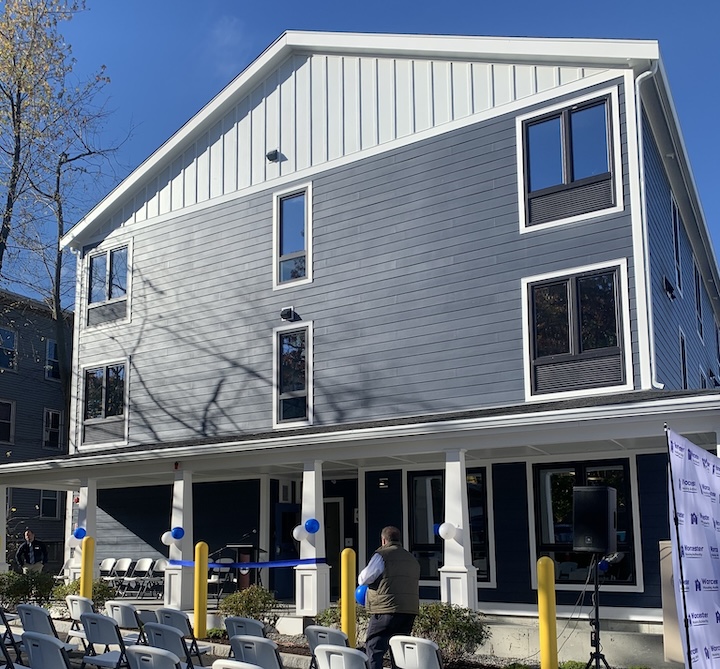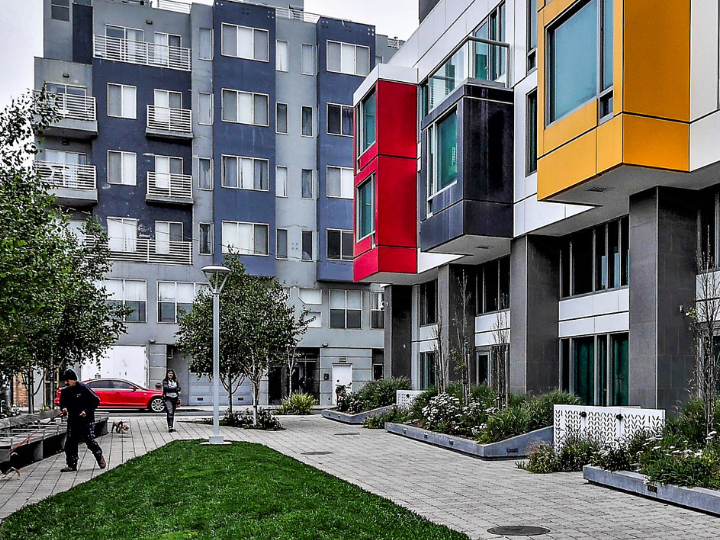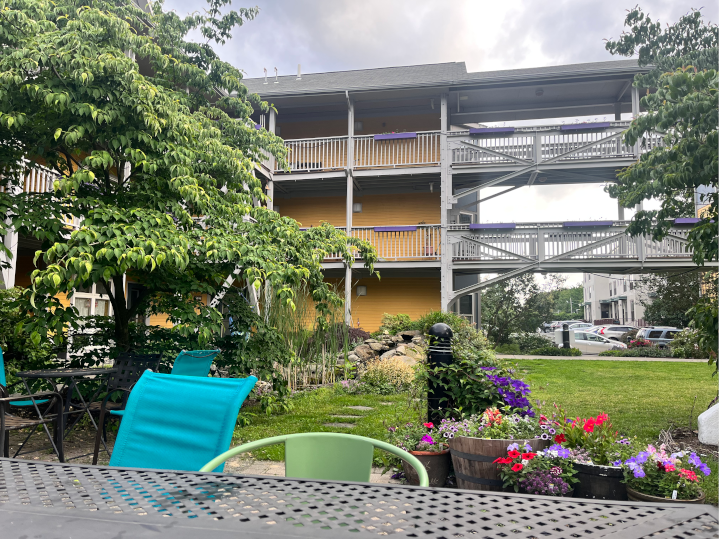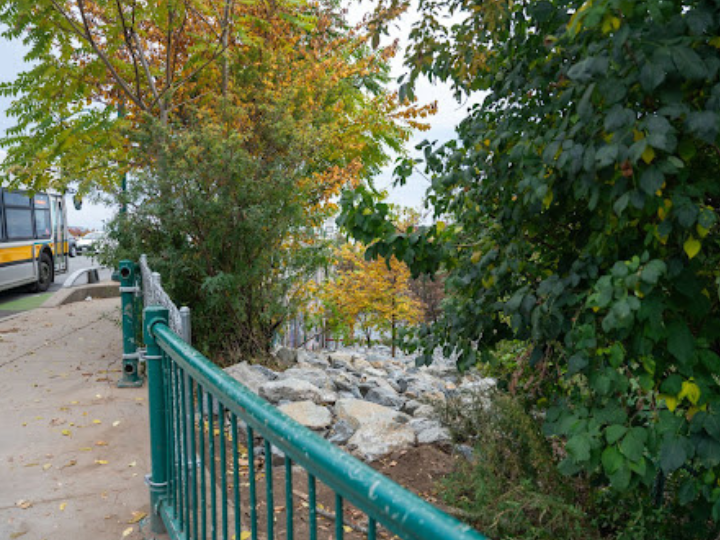Studies show that permanent supportive housing works, including in Massachusetts. Here’s how it has worked so far, how it could work on a larger scale, and what’s holding it back.
Research and interviews by Cohavit Gil | Writing by Chris Faraone and Cohavit Gil
Cambridge Unhoused is a series of articles, columns, explainers, and informational graphics by the Boston Institute for Nonprofit Journalism documenting homelessness funding and services in Massachusetts with particular attention paid to Cambridge. Since the topic is complex and ever-changing, we are publishing multiple short focused pieces that highlight specific issues or stakeholders but that also connect with other coverage for this project. Media produced for the Cambridge Unhoused series is distributed through the MassWire news service of BINJ and can be found together at binjonline.org.
In August, Massachusetts declared a state of emergency due to the growing number of unhoused people within its borders. It was no surprise; the past few years have seen more homeless encampments in multiple Bay State cities, with the opioid-fueled situation on Mass Ave in Boston boiling over several times. All while the commonwealth’s unique right-to-shelter law has advocates scrambling to also house an increasing number of immigrants arriving here.
Things have become so bad that, as of this week, Massachusetts will reportedly hit a calculated 7,500-family cap on how many people it can feasibly shelter. In response, with temperatures dropping, Gov. Maura Healey requested $250 million from the state legislature in supplemental spending for the emergency shelter system, with $50 million to address immediate overflow.
With a crisis mounting and so much talk about temporary housing, it’s easy for service providers to get lost in the daily grind of securing beds for people to sleep on for the night. But for nearly two decades in Massachusetts, many advocates have focused on much longer-term goals, along with interventions that demonstrably work. Specifically, a strategy called Housing First that puts causes as well as symptoms of homelessness aside to address the towering problem of people not having a safe place to live.
Recent trends and events, in the Bay State and elsewhere, have state and local politicians and the public focused on where tens of thousands of unhoused individuals and families are sleeping this week. The official line of the federal government to address this crisis, however—as outlined in the Biden-Harris administration’s strategic plan—is a Housing First-based policy. And when it comes to funding and direction, no matter where you are, the feds lead the way.
Using interviews done for our Cambridge Unhoused series as well as information from stakeholder organizations and research studies, the following breakdown shows how, despite the current state of affairs, dedicated organizers have their eyes on helping people by housing them first.
Where the Housing First concept comes from …
Housing First in the United States largely stems from the work of Sam Tsemberis and his colleagues who started Pathways to Housing in New York City in the 1990s. The seminal program provided homes to unhoused people at an affordable monthly cost—30% of the individual’s monthly income. There were no requirements regarding sobriety or other common stipulations. As Tsemberis recalled in an interview with the Center for Substance Abuse Treatment, “Pathways was the only agency that would provide housing for people who were still using [substances] and had active psychiatric symptoms.”
How Housing First works …
In the Housing First approach, housing is the priority, with all other services—case management, substance use services, mental health treatment, and others—put in place strategically in service of that goal. According to the National Low Income Housing Coalition, it’s the “most effective approach to ending homelessness.” They describe it as an “evidence-based strategy that provides people experiencing homelessness with stable, affordable housing quickly and without prerequisites.”
Joyce Tavon, CEO of the Massachusetts Housing & Shelter Alliance (MHSA), said that after housing is in place, “then you can talk about engaging around issues of substance use or mental health issues and all the rest and put the person at the center [instead of] making things compliance driven. That’s a big shift and to get there involves engaging with providers of housing and providers of shelter in conversations and training so that they can rethink the model.”
The difference from other strategies …
Housing First is an alternative strategy to “treatment first” housing models. Whereas the latter applies band-aids to various intermittent issues, sometimes with no particular end goal in sight, with Housing First, stable long-term housing arrangements must come before any rehabilitation methods. Treatment-leading models with the goal of housing people eventually are also known as “staircase” or “linear” models; through the mid-1990s, these strategies were endorsed by the federal government.
With the Housing First model, applicants are not automatically disqualified based on their current state of mental or financial health. In theory, everyone is “housing-ready.” Models that initially prioritize treatment, however, are typically merit-based: for example, once an individual sorts out their substance use disorder, or once they increase their income, or once they follow all the rules and graduate from a treatment center, only then are they potentially rewarded with stable housing.
Different Housing First models …
As the National Alliance to End Homelessness explains, “Two common program models follow the Housing First approach but differ in implementation.” The first, permanent supportive housing (PSH) is “targeted to individuals and families with chronic illnesses, disabilities, mental health issues, or substance use disorders who have experienced long-term or repeated homelessness.” They are provided with “long term rental assistance and supportive services.”
A second program model known as rapid re-housing is “employed for a wide variety of individuals and families.” This “provides short-term rental assistance and services,” but “operationalize Housing First principles,” with the goal of helping people “obtain housing quickly, increase self-sufficiency, and remain housed.”
The history of Housing First in Massachusetts …
In 2006, the MHSA introduced Home & Healthy for Good (HHG) to Massachusetts. The program, which “provides permanent supportive housing for people experiencing chronic and long-term homelessness,” and for those “who tend to represent the highest usage of costly emergency public services,” effectively became the Commonwealth’s “first statewide Housing First initiative in the effort to end homelessness.”
Tavon said groups like hers really were “pioneering in [getting] member organizations engaged in this shift away from having people jump through a series of hoops until they were both deemed ready for housing.” “If it’s Housing First,” she added, “we’re gonna flip that around and say, No, actually what needs to come first is the housing, the stability of a home and a roof over your head.”
Housing First research and results …
Various studies and anecdotal examples have indicated that, if properly funded and competently executed, Housing First is a viable option for reducing the amount of unhoused people. A study by the Blue Cross Blue Shield Massachusetts Foundation, which covered 2014 to 2019, repeated previous findings that “overall claims for health care expenditures for people in Housing First were significantly lower after entry into permanent supportive housing,” while emergency services and healthcare resource utilization overall decreased for the housed subjects.
In Massachusetts, the MHSA’s Pay for Success (PFS) permanent supportive housing initiative has housed in excess of 1,000 people since the program’s start in 2015. “PFS integrates housing dollars with service dollars to keep people in housing and out of emergency shelters,” while program participants “represent the most vulnerable in our community, particularly those who have disabling conditions and are at risk of high healthcare costs.” MHSA CEO Joyce Tavon noted the Blue Cross Blue Shield report in speaking with BINJ.
“The study shows that individuals with permanent housing support with a Housing First focus on average had $5,267 less in total healthcare costs per year than a comparison group identified as homeless, even though they were accessing significantly more outpatient mental health services,” she said. “They were no longer going in and out of emergency rooms and having those acute care visits that tend to come if you are on the streets or in a shelter.”
How Housing First works in practice …
Though local governments, advocacy organizations, and benevolent builders can use funding from anyplace they can get it to build Housing First residences, the biggest flow of cash comes from the US Department of Housing and Urban Development (HUD). At the state level, in Massachusetts, the conduit is the Executive Office of Housing and Livable Communities (EOHLC), which is charged with “creating more homes in Massachusetts and lowering housing costs for residents.”
For implementation, the MHSA has historically played a major role, through Home & Healthy for Good and other programs. They’re also part of a coalition called MASH, the Massachusetts Alliance for Supportive Housing, which includes the United Way of Massachusetts Bay and Merrimack Valley (UWMB) and Corporation for Supportive Housing (CSH).
Each organization has its own specific Housing First-aligned program, along with criteria for qualification, wait list protocols, etc. In general, though, they’re malleable. As the Massachusetts Association for Mental Health explains the opportunities, “Housing First programs provide rental assistance based on the individual’s or family’s needs.” After service providers make that determination, “participants sign a standard lease.” And while “supportive services are available to people in Housing First permanent housing, they are not required to participate in these programs.”

Current Housing First initiatives in Massachusetts …
In 2021, the Massachusetts State Legislature allocated $15 million to MASH “specifically designated to advance the creation of permanent supportive housing for unaccompanied adults experiencing homelessness who have disabling conditions and who live in underserved areas that demonstrate high rates of racial inequities in homelessness, tent encampments, and/or shelter occupancy, and that may have been considered COVID-19 hot spots.” The funds came from a state reserve of $150 million for permanent supportive housing.
Following an open call for applications last year, the coalition awarded 10 organizations a combined total of $11.75 million for projects that will create 362 permanent units combined in Gloucester, Pittsfield, Lowell, Northampton, North Adams, Attleboro, Springfield, and Worcester, plus $1.2 million to eight organizations for capacity building projects in Boston, Springfield, Malden, Fall River, and on the South Shore.
In Worcester, that city’s housing authority opened a Housing First facility this month with 25 studio units and common space for wraparound services like employment resources. Called A Place to Live, it took more than five years and in excess of $8 million in state and federal funds to complete the project.
What’s next for Housing First in Massachusetts …
With current programs and funding not coming close to providing enough permanent support to meet increasing needs across the state, state Rep. Mike Connolly of Cambridge and Somerville proposed a bill for legislation to “authorize supplemental financing of housing first programs, state public housing renovations, and other housing programs,” and “provide for a capital outlay program to rehabilitate, produce, subsidize and modernize housing developments to achieve functional zero homelessness in the commonwealth.”
In the meantime, service providers on the ground are scrambling, and dealing with the reality that in some cities, there isn’t adequate will, funding, or property to fully embrace Housing First strategies. Alice Kidder, the board president of Solutions at Work, which manages a homeless shelter for men and women on Green Street in Cambridge, said “it would be lovely if [state lawmakers] put in money for affordable housing for homeless people.” She added, “There isn’t enough supply of housing. That’s critical, because to operate a housing first model, you have to have housing.”
The biggest challenge facing Housing First initiatives …
According to Joyce Tavon of the MHSA, “You have to go through all kinds of red tape to create housing,” plus “you’re getting neighborhood opposition because they don’t want that kind of housing.” “So now it’s taking you three to five years and the costs get higher because of how complicated it is to pull all your resources together and all the opposition that you need. So the more we can reduce those barriers and bundle the resources together and make them available, the faster we can achieve our goal and add more supportive Housing First-based housing.”







